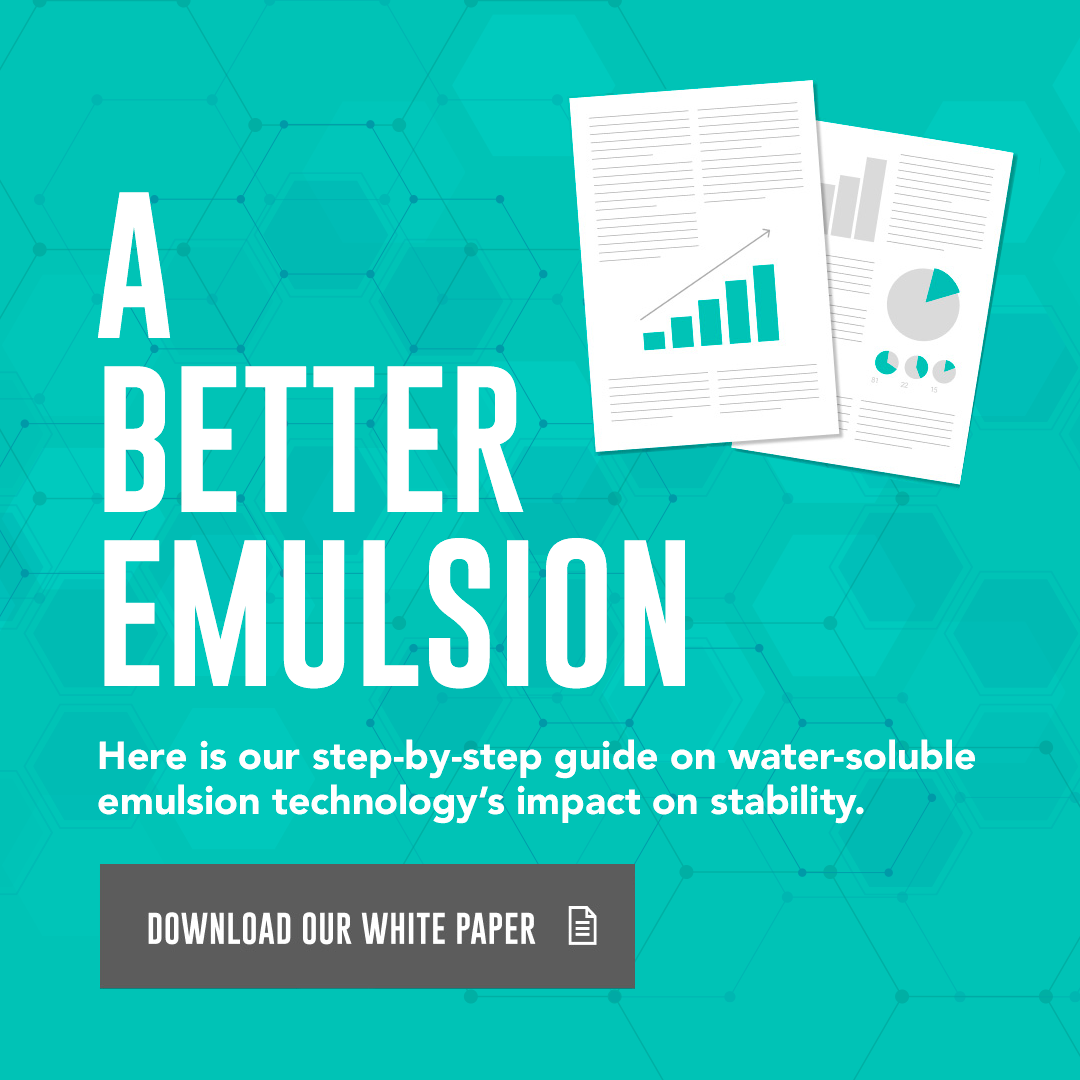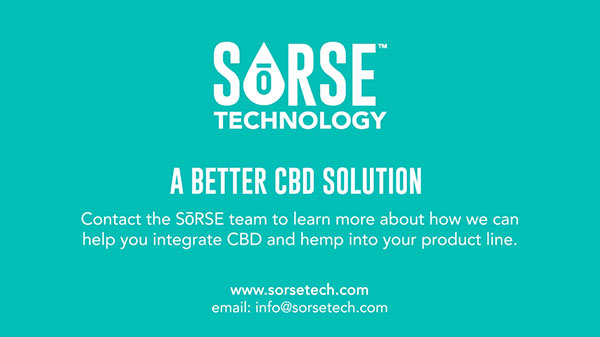Why so many cannabis brands are interested in nano
The cannabis-infused beverage category is one of the industry’s fastest-growing segments, projected to expand at a 22% CAGR over the next five years. But with opportunity comes challenges.
Even with the issues of low bioavailability and varying onset time largely being solved by leading microemulsions providers years ago, many inferior, low-cost microemulsions exist in the space. This leaves many consumers with the false perception that cannabis drinks still fall short in onset time. Until ineffective emulsions can be weeded out, beverages in particular continue to face quality concerns, including the loss of potency and emulsion consistency while they sit on store shelves.
In part, these challenges are driving brands to pursue untested nanotechnology (marketed interchangeably as “nano” and “nanoemulsion”). By engineering smaller cannabinoid particle sizes, cannabinoid nanoemulsions promise faster-acting products with stronger effects.
However, many cannabis brands aren’t familiar with the risks, undue costs, or regulations that come with nano-sized particles. Unproven and largely unstudied for applications in cannabis edibles, nanoscale cannabis may put your reputation, bottom line, and consumer health at risk.
What “nano” really means in the eyes of regulators
Under the simplest definition, nanotechnology refers to engineering ingredients down to dimensions smaller than 100 nanometers (1 nanometer = one billionth of a meter) to create additives with unique physical, chemical or biological properties. In food and beverage, nanomaterials are used to boost taste, texture, bioavailability, shelf life, and sensory properties.
Importantly, definitions vary by jurisdiction. But in the United States, the Food and Drug Administration (FDA) defines nanotechnology as materials between 1 and 100 nm. The scope may extend to several hundred nanometers if those particles exhibit novel properties.
Engineered particles can display different biological, chemical, and reactive behaviors than their macro-scale origins, including the ability to pass through membranes and barriers. Because of these potential differences, regulators worldwide have turned their attention to nanomaterials. For the FDA, that evaluation happens within existing, product-specific frameworks rather than via a one-size-fits-all “nanoparticle rule.”
Where the FDA has premarket authorities (for example, with food additives, color additives and certain dietary ingredients, among other areas), the established review processes “include attention to whether the use of nanomaterials suggests the need for additional data on safety or effectiveness.”
Where premarket review doesn’t apply (for example, most cosmetics and dietary supplements), “consultation is encouraged,” and “industry remains responsible for ensuring that its products meet all applicable legal requirements.” FDA also notes that it “will continue post-market monitoring.”
Why does this matter for you, a cannabis beverage manufacturer? Because if and when cannabinoids fall under FDA oversight for foods or supplements, nanoscale THC cannabinoid particles and emulsions would be reviewed within the same product-specific framework. Not because they are nano per se, but because size-related properties could mean they act differently within the human body, presenting concerns for safety or performance.
In that scenario, brands could expect requests for more robust data: particle size and distribution, how particles behave in the finished formulation, and also information on their absorption, distribution and excretion. Additional studies to address safety and effectiveness would also be needed, with the burden falling on the manufacturer.
Enter CBD and THC nanoemulsion: the myth of faster onset
Over the last decade, nanotechnology has made its way into the burgeoning cannabis market. In efforts to solve the low bioavailability of cannabis, brands brought in nanotech experts from the food industry to transform their cannabinoid compounds into something more efficient. While bioavailability issues have since been addressed by well-formulated microemulsions, nanotech still managed to become the industry’s biggest buzzword.
The theory behind nanotech goes something like this: nanoemulsification of THC and other cannabinoids breaks down the large molecules into the nanoscale, measuring somewhere between one and 100 nm in size (exact size varies depending on who you ask). These ultra-small particles are able to cross biological barriers in ways that larger particles cannot.
In theory, this means the absorption rate is no longer restricted by the complications of the digestive tract, but instead can move through vascular walls. On the surface, a faster onset and greater bioavailability are welcome changes for consumers. After all, oil-based compounds such as cannabinoids like THC can have a bioavailability problem.
According to a 2019 paper published in Cannabis and Cannabinoid Research,
“Oral bioavailability of THC is 6%± 3% following oral consumption in a food product and 10–20% after consumption of a cannabis extract. This is in contrast to the bioavailability following inhalation, which ranges from 10% to 37%.”
In reality, this is entirely uncharted and untested territory. If the THC particles are small enough, they could eventually migrate anywhere within the body, potentially making their way into cerebral fluid, organs and fetuses.
Where do nanocannabinoids end up once consumed? And what about label claims; does nano actually guarantee faster onset? To date, a number of studies have looked at onset times, but there is a lack of safety and toxicology studies on cannabinoid-containing nanomaterials. Nano THC drinks and edible brands may keep telling consumers their products are safe and deliver faster, more potent effects, but the scientific basis for these claims is dubious at best.
Microemulsion systems have already demonstrated extremely fast, consistent absorption and effect profiles, with onset times and durations comparable to those achieved through inhalation or combustion.
The unknown health risks of nanotechnology
Scientists have already raised important concerns about introducing nanoparticles into consumer products, and cannabis is no exception. Its use in food and beverages remains a relatively new and untested frontier.
Why is there such a difference between a macro-sized THC molecule and a nanosized one? Because once materials are transformed down to the nanoscale, they can exhibit completely different mechanical, electrical, and reactive properties from their larger counterparts.
As Bhupinder S. Sekhon summarized in a nanotech review,
“Scientists are of the opinion that nanomaterials are fundamentally different substances that create new and unique risks to human health and the environment and require new forms of safety monitoring.”
An OECD report further warns that durable, biopersistent nanoparticles may accumulate in sensitive organs such as the lungs, brain and liver, and could even transfer from a pregnant woman to her unborn child. Related studies have shown that inhaled or ingested nanoparticles can bypass biological barriers, enter the bloodstream, and accumulate in critical tissues.
Dr. Anubhav Pratap Singh, assistant professor at the University of British Columbia, echoed these industry-wide concerns, noting that nanoparticles at extremely small sizes may penetrate human cells and remain in organs if not properly excreted. He also highlighted a significant regulatory gap in Canada (but one that could ultimately apply in other legal markets).
Health Canada has not yet established specific rules for cannabinoid nanoparticles or a consistent definition of what qualifies as a nanoparticle. Whether classified as particles, emulsions or liquids, this lack of clarity is an ongoing issue for both regulators and consumers.
The takeaway for cannabis beverage makers is this: until long-term safety data catches up, leaning on nano THC risks placing your brand on the wrong side of consumer safety.
The risk of chasing “nano”
For cannabis beverage and edible makers, nanoemulsification may sound like a ticket to sales and greater consumer satisfaction, but even in nanotech’s relatively short history in consumer packaged goods, it has already become a liability.
Across biotech, nutraceuticals and cannabis, those who have rushed to market with nano-focused branding and product claims have found themselves battling mistrust, facing additional regulatory scrutiny, and experiencing the associated reputational fallout.
In just one of the most notable examples from within the cannabis and hemp sectors, CBD Living Water promoted itself as infused with nano CBD. Yet, independent lab analyses found zero detectable CBD content, which sparked accusations of false advertising. The scandal evolved to the point where the FDA also flagged the lab that originally provided CBD-positive results for the CBD-infused water.
The controversy forced CBD Living Water to defend itself by pointing to the limitations of industry-standard testing for nanoscale materials—an argument that, in effect, cast doubt on the credibility and efficacy of all nano-labeled products. The problem persists today; there is still no standardized methodology to verify nano claims in cannabis.
Lack of standardization is a scientific concern and a regulatory one. This is a risk. Especially as cannabis makes its way into more consumer goods than ever before, and as it potentially moves under a future FDA mandate. Slapping nano on the label without transparent third-party data demonstrating the product’s safety, efficacy, and potency leaves companies vulnerable to additional regulatory attention.
Cannabis nanoemulsions offer short-term trade-offs for long-term risk
Cannabis nanoemulsions are not magic bullets for faster onset or higher sales; they are often more of a marketing buzzword and can actually present a risk.
Much of the perceived issue around bioavailability and onset times that has driven the industry’s obsession with all-things nano comes from consumers’ past experiences with edibles 15, 10, or even five years ago. This was when formulations were inconsistent and absorption was slow.
A well-formulated microemulsion largely solved those issues nine years ago. As Scott Riefler, CSO of SōRSE Technology, explains:
“Micro size emulsions are the preferred path because they address the bioavailability, they address the rapid onset and they are well positioned within FDA because there are so many use applications that are in the microparticle size.”
Poorly designed nanoemulsions can create liabilities, leaving questions about safety, shelf stability, and where nanoparticles may accumulate within the body. These concerns can erode consumer trust and, down the line, invite additional regulatory scrutiny.
For cannabis beverage makers, the safer path is to invest in validated microemulsion systems, which address the issues of bioavailability without putting consumer safety at risk. By avoiding the nanoscale hype with proven microemulsions, you protect your brand now and well into the future.





